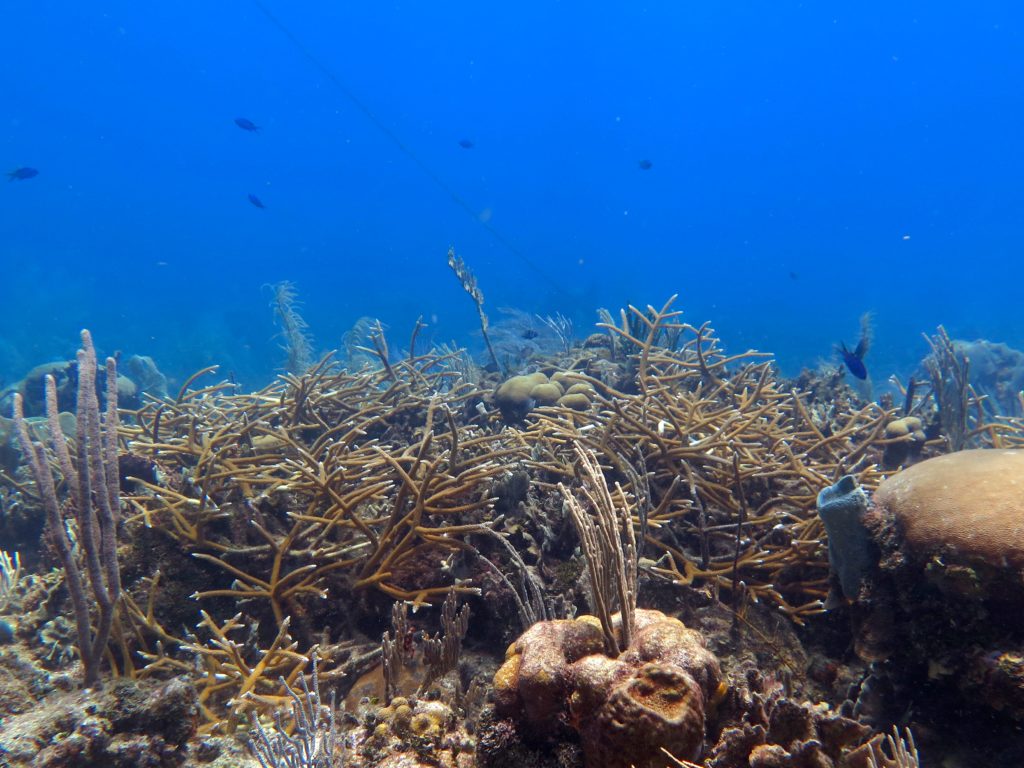By Raquel Gilliland; Sea of Change Intern
Welcome back to our regularly posted “Creature Feature” where we introduce you to a sea creature that is special and unique. This week’s “Creature Feature” is an invertebrate that for hundreds of years confused early scholars by classifying them as rocks, plants, animals and everything between. It was not until the early 18th century that William Herschel looked through a microscope and used the thin cell wall membranes to officially identify coral as an animal. Today hard corals, or stony corals, belong to the Class Anthozoa, which means “flower animal”. This “Creature Feature” is a two-for-one special; the large branching coral commonly known as elkhorn coral (Acropora palmata) and the thin antler-like coral commonly known as staghorn coral (Acropora cervicornis)

These elkhorn and staghorn corals were historically found throughout the Bahamas and the Caribbean, stretching as far north as Florida’s Biscayne National Park. Due to their symbiotic relationship with zooxanthellae, a small photosynthetic organisms that live in the corals’ tissue, these corals live mainly in warm shallow waters of the equatorial zone.

These corals hold significant importance to the ocean’s ecosystem by building the structures that we call tropical coral reefs. Coral reefs serve many important ecosystem functions such as providing habitat for other invertebrates and fish, protecting our coastlines from erosion and storm surge, providing ecotourism opportunities, and helping to keep fisheries sustainable. Once thought of as a boundless resource, these coral species face near extinction as coral reefs all over the world decline due to many anthropogenic (human caused) impacts such as warming oceans and ocean acidification due to climate change, bleaching events, boat groundings, disease outbreaks, and water pollution. Staghorn and elkhorn corals are currently listed as critically endangered by the IUNC Red List of Threatened and Endangered Species. However, conservation organizations and scientists are working to restore their populations. Follow this link to how the Sea of Change Foundation is partnering supporting these conservation efforts around the world.




